Have you ever wondered what your furry feline friend is trying to tell you? Cats are highly expressive creatures, and they use a variety of cues to convey their feelings, needs, and desires. Cats uniquely communicate, and understanding cat behavior and body language can significantly enhance your bond with your pet.
You can gain valuable insights into their emotional state by learning to read their body language. For instance, a raised cat tail movement indicates happiness and confidence, while a puffed-up tail suggests fear or angry cats. Understanding cat behavior goes beyond interpreting individual cues; it also involves recognizing patterns and context. By deciphering these subtle cues, you can better meet your cat’s needs and create an environment that fosters their well-being.
Read More: Traveling with a cat? Do’s and Don’ts of traveling with your furry friend that you must keep in mind
This article will explore various aspects of cat behavior and body language, providing practical tips and insights to improve communication with your furry companion. So get ready to crack the code and unlock a deeper understanding of your cat’s world!
This article will explore different aspects of cat behavior, shedding light on their instincts and unique traits.
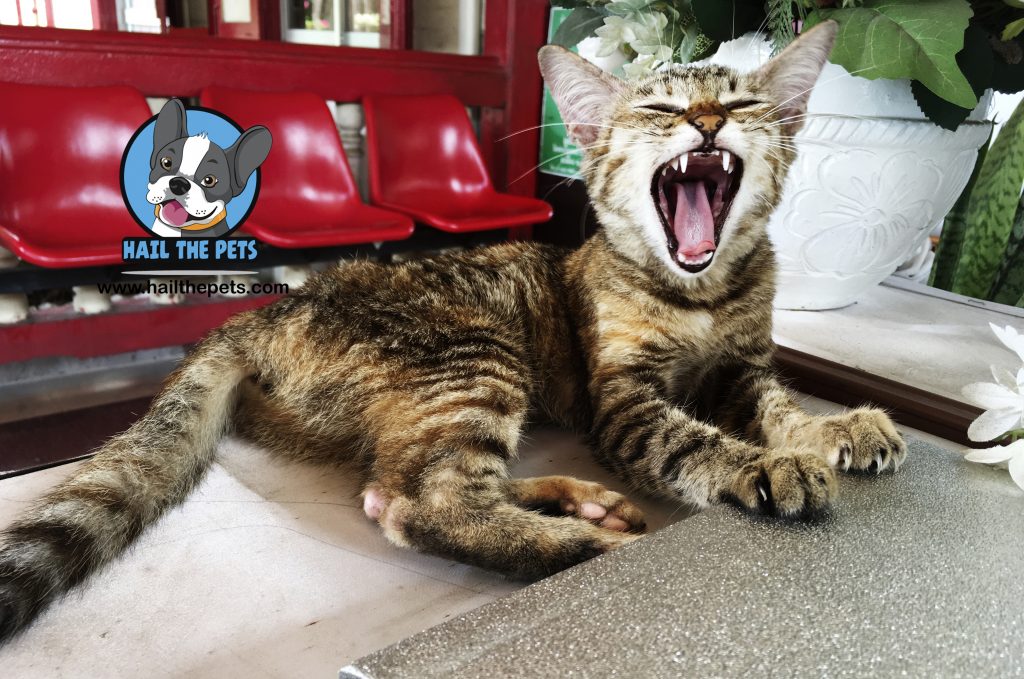
Purring
Purring is a well-known behavior in cats. It typically indicates contentment and relaxation. Cats often purr when they are being petted, cuddled, or when they are in a comfortable environment. However, purring can also be a sign of distress or pain, so it’s essential to consider other signals from your cat to determine its emotional state accurately.
Read more: Why do cats purr?
Showing Its Belly
When a cat shows its belly, it is often seen as a gesture of trust and vulnerability. However, it’s crucial to recognize that not all cats enjoy belly rubs. Some cats may expose their bellies as a way to play or as an invitation for interactive playtime with their human companions. Understanding your cat’s preferences and body language is essential to avoid misinterpreting these behavioral cues.
Chewing
Cats are curious by nature and often explore their surroundings with their mouths. Chewing on cords can be a sign of boredom or teething in kittens. However, it can also be dangerous and potentially life-threatening. This cat behavior could indicate a lack of appropriate toys or environmental enrichment. Redirecting your cat’s chewing behavior towards safe alternatives, such as cat toys or designated chewing items, is essential.
Chirping
Chirping is a unique vocalization often observed in cats watching birds or prey. They can express excitement or frustration when they cannot reach the desired target. Chirping is believed to mimic the sounds cats make while hunting in the wild. It’s an instinctual cat behavior, and usually harmless unless it leads to excessive frustration or stress.
Vocalizing With Meows, Purrs, and More
Cat vocalizations, such as meowing, purring, and trilling, serve as a means of communication. Meowing can indicate various things, such as hunger, discomfort, or a desire for attention. As mentioned earlier, purring typically indicates contentment, while trilling is often a greeting or a sign of excitement. Paying attention to the context and accompanying body language can help decipher the message behind the vocalizations.
Read More: Five common cat noises and what do they mean
Tail Talk
A cat’s tail movement is an essential tool for communication. Different tail positions can convey various emotions and intentions. For example, an upright and puffed-up tail often indicates aggression or fear, while a gently swaying tail can signify relaxation. A tail wrapped around the body is a sign of submission or anxiety. Paying attention to your cat’s tail movements can provide valuable cues about its current mood and help you respond appropriately.
Bringing Dead Animals (or Toys)
While it may seem perplexing, cats bringing dead animals or toys to their owners is a natural behavior rooted in their hunting instincts. In the wild, cats hunt for prey and get it back to their den or family as a display of their hunting prowess and as a way to share food. When your cat brings you a dead animal or toy, they consider you part of their family and present you with a “gift.”
Read more: Why Do Cats Bring You Mice or Dead Animals as Gifts?
It’s their way of showing affection, gratitude, or a desire to provide for you. Although it may be unsettling to some, it’s essential to recognize this behavior as a sign of your cat’s love and trust.
Licking You

Licking is a typical behavior among cats, and when they choose to lick you, it holds a special significance. Cats engage in licking as a way to groom themselves and maintain hygiene. When they extend this behavior to humans, it’s an expression of affection and bonding.
Licking is a comforting gesture for cats, and they often view their human companions as part of their social group. They display trust, familiarity, and a desire to strengthen your bond by licking you. While it may feel ticklish or even uncomfortable, accepting and reciprocating this cat behavior can foster a deeper connection with your cat.
Understanding Body Language of Cats
Different Cat Postures
Observing these postures gives us valuable insights into their behavior and emotions. In this article, we will explore ordinary cats’ body language and what they indicate, emphasizing the significance of cat behavior.
Relaxed and Contented Posture
When a cat is relaxed and contented, their body language speaks volumes about their emotional state. Some indicators of this posture include:
Lying on the Back
When a cat lies on its back, exposing its belly, it signifies trust and a sense of security. It is an invitation for gentle petting and shows that the cat is comfortable in its environment.
Soft, Half-Closed Eyes: Cats with relaxed postures often exhibit soft, half-closed eyes. This expression indicates a state of tranquility, demonstrating that the cat feels safe and at ease.
Read more: Why Does My Cat Lie On Its Back? Reasons Why Your Kitty Sleeps Topsy-Turvy
Loosely Curled Tail: A loosely curled tail, without any tension or rigidity, is a positive sign. It indicates contentment and shows that the cat is not experiencing any stress or anxiety.
Defensive or Fearful Posture
Cats may adopt defensive or fearful postures when they feel threatened or scared. Recognizing these postures can help us understand when a cat is uncomfortable or distressed. Some key indicators include:
Arched Back: When a cat arches its back, raises its fur, and tucks its tail tightly, it is a classic defensive posture. This indicates that the cat is trying to appear larger and more intimidating to potential threats.
Ears Flattened Back: Flattened ears pressed tightly against the head suggest fear or anxiety. It is a way for cats to protect their vulnerable ears from potential harm.
Dilated Pupils: In defensive postures, a cat’s pupils may dilate, making their eyes appear more prominent. This physiological response reflects heightened arousal and readiness to react to a perceived threat.
Aggressive Posture
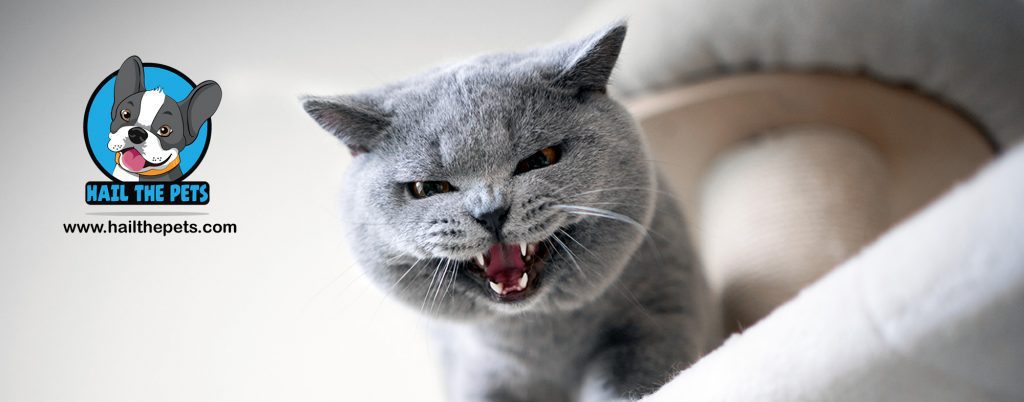
When cats feel threatened or challenged, they may display aggressive postures to establish dominance or protect their territory. Some notable indications of aggression include:
Erect Tail and Upright Hair: An aggressive cat will often hold its tail straight up, with the fur standing on end. This posture helps them appear larger and more intimidating to potential rivals.
Direct Eye Contact: Maintaining unwavering eye contact shows cat aggression. It is their way of asserting dominance and challenging their opponent.
Read more: Feline Behavior Problems: Aggression
Hissing and Growling: Aggressive cats may hiss, growl, or snarl to communicate their intent to attack or defend. These vocalizations and other aggressive postures serve as clear warnings to back off.
Playful and Energetic Posture
Cats exhibit distinct postures when they are in a playful mood. Understanding these postures can help us engage with them effectively and provide appropriate outlets for their energy. Key indications include:
Pouncing Stance: A cat ready to pounce will lower its body close to the ground, with its hind legs coiled, tail twitching, and eyes focused intently on its target. This posture reflects their excitement and anticipation of play.
Playful Biting and Scratching: During play, cats may nibble or gently bite, keeping their claws sheathed. These actions involve mock hunting behavior and interacting with their human or feline playmates.
Do cats talk?
Do cats talk? While they may not communicate like we do, cat behavior speaks volumes. Cats have a unique language consisting of subtle cues and gestures. They’re experts at conveying their moods and desires through body language, vocalizations, and facial expressions.
When a cat rubs against your leg or bumps their head on you, it signifies affection and ownership. Purring is their way of expressing contentment and relaxation. On the other hand, hissing, growling, or flattening their ears are clear warnings to back off.
Read more: Do cats speak?
Paying attention to these signals helps us understand our feline friends better. But do cats talk in words? Well, not exactly. However, they’re excellent at training us to understand their needs. So, while cats may not converse like humans, their cat behavior is a language. By observing and listening, we can develop a deep bond with our furry companions and understand what they’re trying to tell us.
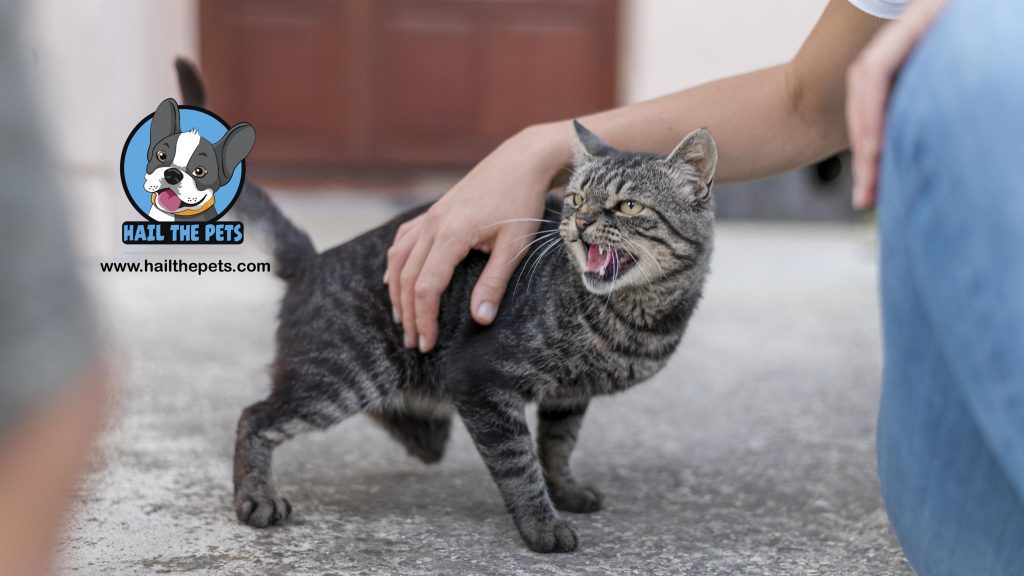
How do cats show affection?
Cats express affection uniquely, and understanding their behavior and body language can help us decipher their love signals. When showcasing appreciation, cats often engage in subtle yet heartwarming gestures.
- Purring: Cats often express their affection through gentle purring. This soothing sound signifies contentment and can occur when relaxed and happy.
- Head butting: Known as “bunting,” cats may rub their heads against your face or other objects as a sign of affection. This cat behavior marks their territory and shows trust.
- Slow blinking: Cats communicate trust and affection by giving you a slow blink. When a cat looks at you and closes its eyes halfway, it says, “I feel safe and comfortable with you.”
- Grooming: Mutual grooming is a bonding behavior in cats. When they lick themselves or other cats, it’s a sign of trust and affection. If your cat licks you gently, they consider you part of their social group.
- Tail movement: A cat’s tail movement can convey different emotions. A cat holding its tail straight up with a slight curve at the end shows they’re happy and friendly, expressing affection towards you.
Understanding cat behavior and body language allows us to recognize their affectionate gestures. So next time your feline companion head butts you or gently sways their tail, know it’s their way of saying, “I love you.” Embrace these subtle expressions as they hold a world of warmth and adoration within them.
How to tell if your cat is happy?
Do you ever wonder if your feline friend is genuinely content? Decoding your cat’s emotions might seem like a mystery, but fear not! There are telltale signs that can help you gauge their happiness.
First and foremost, observe your cat’s behavior. A happy cat will display simple body language, with their tail held upright or gently swaying. Content cats often enjoy purring softly, rubbing against your legs, or curling up in your lap. They’ll also engage in playful antics, chasing toys or pouncing on imaginary prey.
Read more: How do I know if my cat is happy?
On the flip side, pay attention to any signs of anger or distress. Angry cats may have their ears flattened, pupils dilated, or fur standing on end. They might hiss, growl, or even swat at you if they feel threatened or upset.
Each cat is unique, so understanding their personality and preferences is crucial. Spend quality time with your furry companion, provide a stimulating environment, and ensure their physical and emotional needs are met. Doing so creates a happy and harmonious bond with your feline friend.
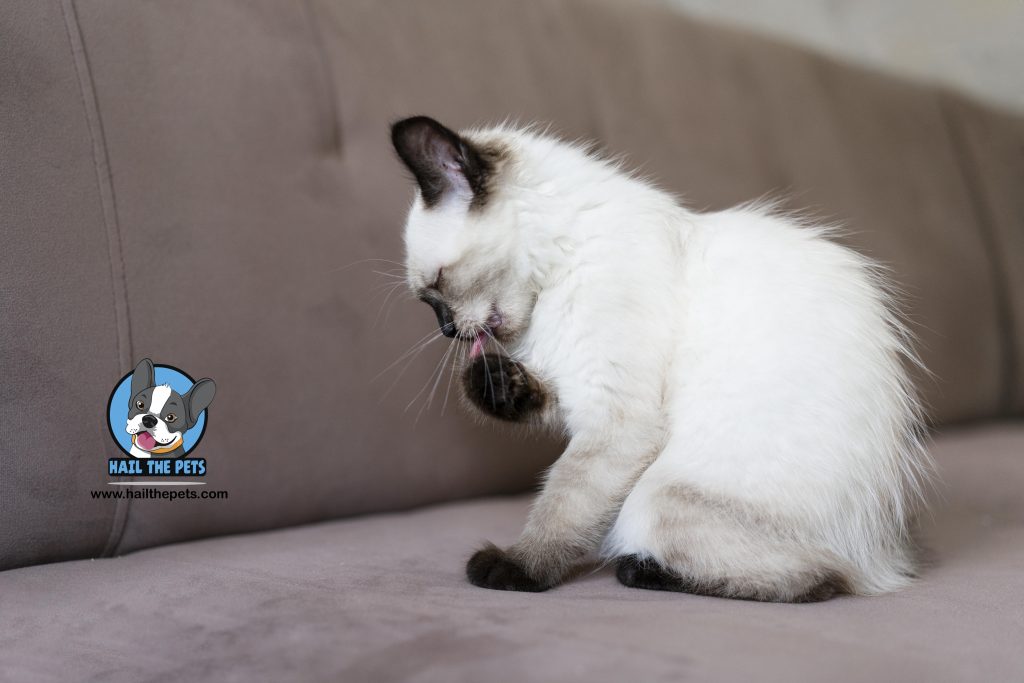
Conclusion
Understanding cat behavior is the key to decoding their cues and establishing better communication with our feline companions. By familiarizing ourselves with cats’ subtle signals to express their emotions and needs, we can create a harmonious and fulfilling bond with them.
When observed, cat behaviour provides valuable insights into their state of mind. From their body language to vocalizations, cats convey messages that can guide us in responding appropriately. Moreover, recognizing signs of stress, fear, or contentment can help us modify their environment and routines, ensuring their well-being.
In essence, learning the language of cat behavior empowers us to forge a stronger connection with our feline friends. So, let’s embrace the opportunity to decode cat cues and embark on a journey of improved communication and deeper companionship with our beloved cats.
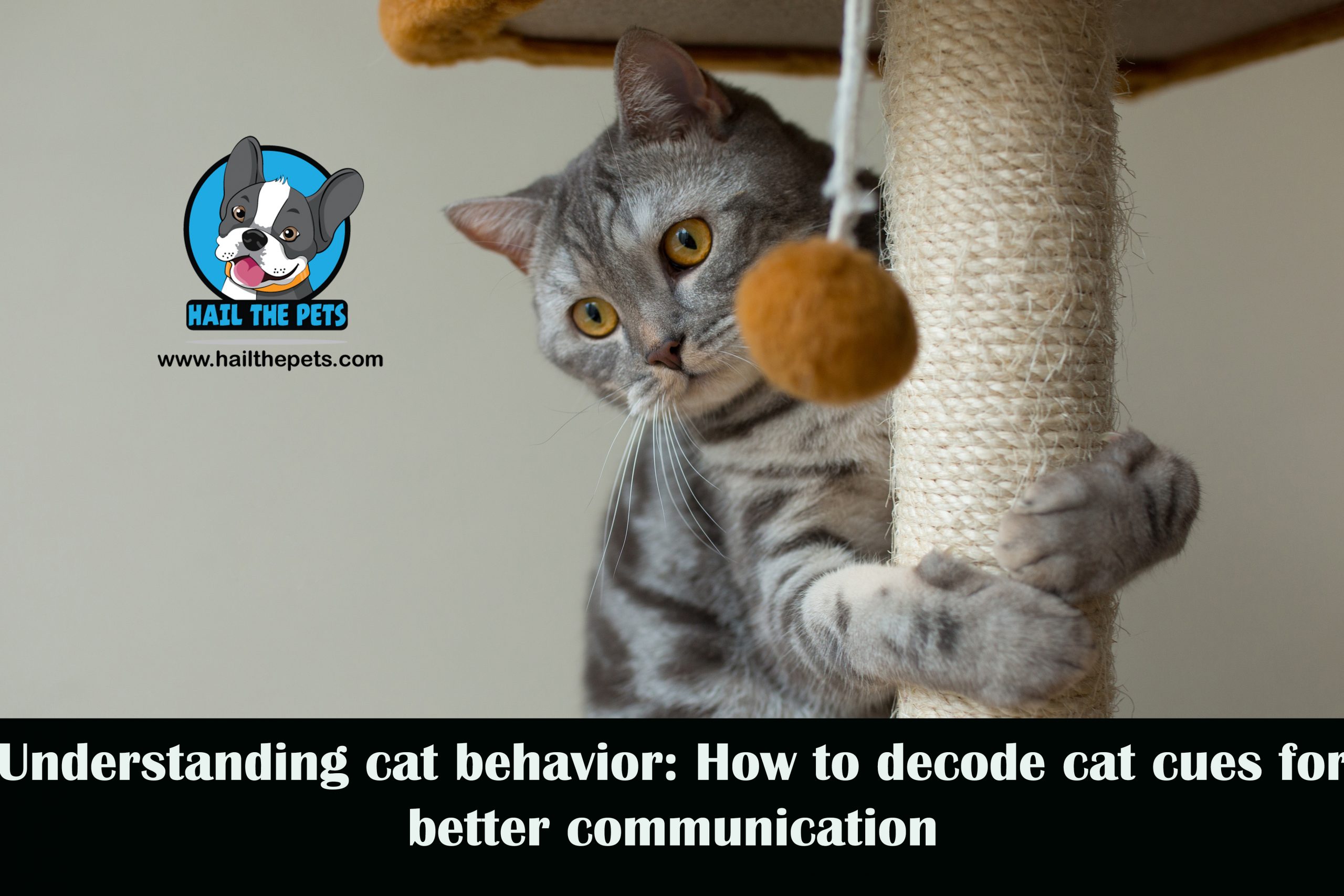
Thank you for your sharing. I am worried that I lack creative ideas. It is your article that makes me full of hope. Thank you. But, I have a question, can you help me?